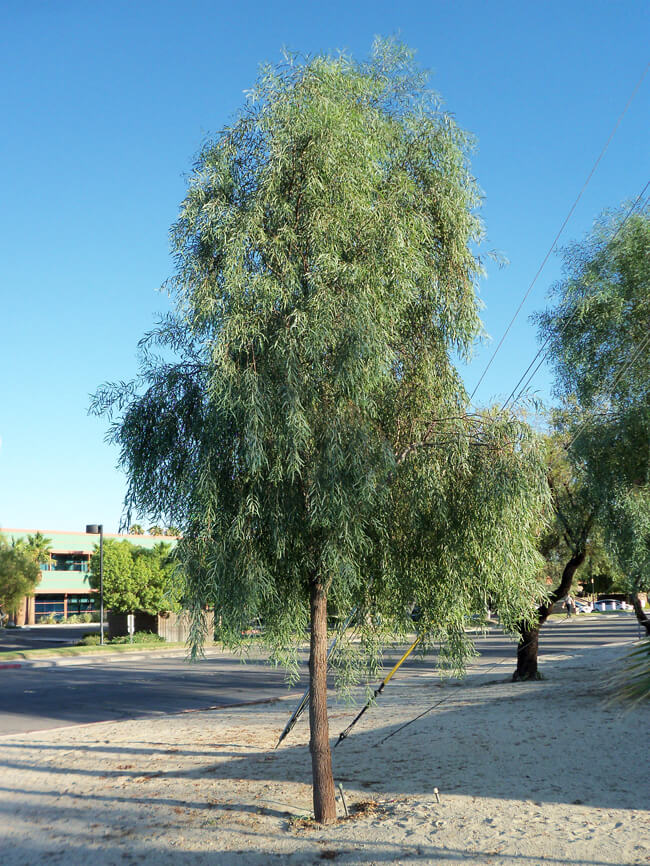Wholesale Division: (818) 316-2000 [email protected]
Retail Division – So Cal Only: (818) 316-2024 [email protected]

Boething Treeland Farms grows over 1,000 varieties of trees, shrubs, perennials and specialty plants on 10 California nurseries to serve the wholesale landscape and nursery industries throughout the Western United States and beyond.
Plant Type: Trees
Evergreen-Deciduous: Evergreen
Overall Mature Size: Medium
Mature Height & Spread: 20-40' x 15'
Natural Growth Habit: Weeping
Native To: Australia/New Zealand
Exposure: Full Sun, Partial Shade
Water: Low Water
Flower Color: Yellow
Bloom Time: Spring, Winter
Special Features: Attracts Birds/Butterflies / Cold Hardy / Deer Resistant / Drought Resistant / Hedge / Screen / Seacoast Conditions
Container Sizes: #15
Sunset Garden Zones: 8, 9, 12-24
Minimum USDA Hardiness Zone: 7 - 10
Linear, blue-green leaves on a frame of spreading, weeping branches, give the Acacia salicina a willow-like appearance without the water requirements of a true willow. Yellow, pollen-laden flowers on this Australian native provides a food source for bees and butterflies and offers a showy display from winter to spring. This evergreen tree prefers good drainage in dry soil and tolerates seaside conditions. The Aborigines used the high-tannin bark in medicine, as a toxin for fishing, and in tanning. Seeds were eaten by indigenous people, but it should be noted that it is a potential allergen and poison hazard. The Willow Acacia is a good choice for a low-water use garden or desert landscape, and its moderately-dense canopy is easily pruned into a screen or hedge.
Linear, blue-green leaves on a frame of spreading, weeping branches, give the Acacia salicina a willow-like appearance without the water requirements of a true willow. Yellow, pollen-laden flowers on this Australian native provides a food source for bees and butterflies and offers a showy display from winter to spring. This evergreen tree prefers good drainage in dry soil and tolerates seaside conditions. The Aborigines used the high-tannin bark in medicine, as a toxin for fishing, and in tanning. Seeds were eaten by indigenous people, but it should be noted that it is a potential allergen and poison hazard. The Willow Acacia is a good choice for a low-water use garden or desert landscape, and its moderately-dense canopy is easily pruned into a screen or hedge.